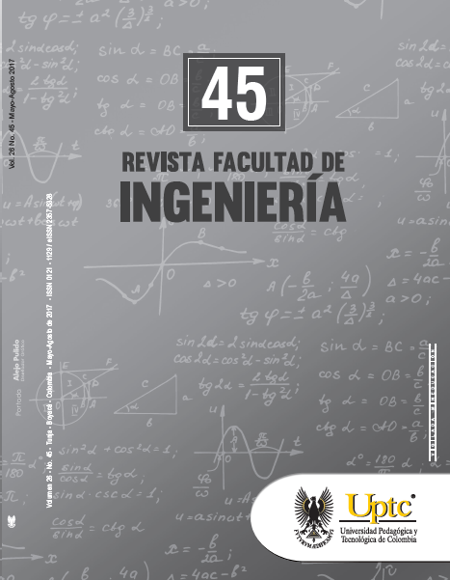Implementation of ATEX standards in the context of mining activity in Colombia

Abstract
Mining in Colombia is regulated by the Mining Safety Code, and although it had not been updated since 1987, the references on safety that the code has owned were based on international standards. However, these references do not have a mandatory adoption, and despite a strong component on occupational safety and health, Decree 1886/15 continues to show a rough technical content that could consent the extension of mining disasters associated with explosions in Colombia. This article specifies the international mine safety regulations, and critically analyzes the absence of its applicability in the country. Although the national outlook is discouraging because of the lack of rigor from governmental entities in enforcement, mining in other countries has improved in safety as a result of implementing standards that ensure quality operations and procedures, machinery, and human resources, decreasing mining disasters.
Keywords
Accident Prevention, Combustion, Explosions, Explosive atmosphere, Occupational safety, Standards review
References
- A. Jiménez, M. Alfonso, V. Aguirre, E. Morales, J. Martínez, R. Sguerra, J. Navarro, J. Molina, and M. Alzate. Informe preliminar de la investigación del accidente fatal de 73 trabajadores sucedido el miércoles 16 de junio de 2010 en la Mina San Joaquín. Título 11338, beneficiario Carbones San Fernando, ubicada en el municipio de Amagá, (Vereda Paso Nivel) Antioquia. Ministerio de Minas y Energía. Colombia, 2010. Available: http://www.minminas.gov.co/minminas/downloads/archivosEventos/6349.pdf.
- Parlamento Europeo and Consejo de la Unión Europea, Directiva 2014/34/UE. 2014, pp. 309–356.
- AEN/CTN 163, Norma Europea UNE-EN 1127-1:2012. Atmósferas explosivas. Prevención y protección contra la explosión. Parte 1: “Conceptos básicos y metodología”, p. 45, 2012.
- J. W. Cheng, and S. Q. Yang, “Improved coward explosive triangle for determining explosibility of mixture gas,” Process Saf. Environ. Prot., vol. 89 (2), pp. 89-94, Mar. 2011. DOI: http://doi.org/10.1016/j.psep.2010.12.001. DOI: https://doi.org/10.1016/j.psep.2010.12.001
- Instituto Nacional de Seguridad e Higiene en el Trabajo, “Guía técnica para la evaluación y prevención de los riesgos derivados de atmósferas explosivas en el lugar de trabajo - Real Decreto 681/2003,” BOE, vol. 145, p. 103, 2003.
- Á. Romero, A. Marín, and J. Jiménez. “Wireless sensor network for early warning monitoring in underground mines: a solution to the problem of explosive atmospheres in Colombian coal mining,” Ing. Desarro., vol. 31 (2), pp. 227-250, Dec. 2013.
- National Fire Protection Association NFPA 68: Standard on Explosion Protection by Deflagration Venting”, p. 88, 2013.
- J. García Torrent, and J.J. Arévalo, “Increase in coal explosibility due to methane adsorption,” in 25th Int. Conf. Safety Mines Research Institute, 1993.
- J. García Torrent, and J. Cantalapiedra Fuchs, “Flammability and explosion propagation of methanecoal dust hybrid mixtures,” in 23rd. International Conference of Safety in Mines Research Institutes, 1989.
- National Fire Protection Association (NFPA), “About NFPA,” 2016. Available: http://www.nfpa.org. [Accessed: 01-Jan-2017].
- National Fire Protection Association, “NFPA 654: standard for the prevention of fire and dust explosions from the manufacturing, processing, and handling of combustible particulate solids,” 2013.
- Atmósferas explosivas, “Normativa ATEX,” Available: http://www.atmosferasexplosivas.com/index.php/normativaatex. [Accessed: 01-Jan-2017].
- Parlamento Europeo and Consejo de la Unión Europea, Directiva 94/9/CE. Unión Europea, 1994, pp. 1-29.
- Ministerio de Industria, Energía y Turismo, “Real Decreto 144/2016,” BOE, vol. 90, pp. 25638-25678, 2016.
- Ministerio de la Presidencia, “Real Decreto 681/2003,” BOE, vol. 145, 2003.
- Consejo de las Comunidades Europeas, “Directiva 89/391/CEE. Ley de Prevención de Riesgos Laborales,” Diario Oficial de las Comunidades Europeas, vol. L183, pp. 1-8, 1989.
- Parlamento Europeo and Consejo de la Unión Europea, Directiva 1999/92/EC, 2000, pp. 57-64.
- Consejo de las Comunidades Europeas, “Directiva 92/104/CEE,” Diario Oficial de las Comunidades Europeas, vol. 404, pp. 10-25.
- Ministerio de Industria y Energía, “Real Decreto 1389/1997,” BOE, vol. 240, pp. 29154-29164, 1997.
- Consejo de las Comunidades Europeas, “Directiva 92/91/CEE,” Diario Oficial de las Comunidades Europeas, vol. 348, pp. 9-24, 1992.
- Ministerio de Industria y Energía, “Real Decreto 150/1996,” BOE, vol. 59, pp. 9407-9416, 1996.
- J. García-Torrent, C. Fernández-Ramón, and E. Querol-Aragón, “Nuevas soluciones para atmósferas explosivas en minería,” Canteras y Explot., no. 478, pp. 30-47, 2007.
- AEN/CTN 163, UNE-EN 1710:2006+A1:2008. Equipos y componentes con uso previsto en atmósferas potencialmente explosivas en minería de interior. España, 2008, p. 40.
- J. García Torrent. Seguridad Industrial en Atmósferas Explosivas. Laboratorio Oficial J. M. Madariaga. Universidad Politécnica de Madrid. 816 pp., Madrid, 2003.
- L. Medic-Pejic, J. García Torrent, N. Fernández Añez, and K. Lebeckic, “Experimental study for the application of water barriers to Spanish small cross section galleries,” DYNA, vol. 82 (189), pp. 142-148, Feb. 2015. DOI: http://doi.org/10.15446/dyna.v82n189.42689. DOI: https://doi.org/10.15446/dyna.v82n189.42689
- Grupo de Seguridad y Salvamento Minero, “Estadísticas de Accidentalidad. Consolidado 2005-2016,” Agencia Nacional de Minería, 2017. Available: http://www.anm.gov.co/?q=emergencias_mineras">http://www.anm.gov.co/?q=emergencias_mineras.
- U.S. Chemical Safety and Hazard Investigation Board. “Investigation report. Sugar dust explosion and fire (14 killed, 36 injured),” Imperial Sugar Company, Port Wentworth, Georgia, 2009. Available: http://www.csb.gov/assets/1/19/imperial_sugar_report_final_updated.pdf.
- Ministerio de Minas y Energía, Decreto 1886 de 2015. Reglamento de seguridad en las labores mineras subterráneas, Colombia, 2015. Available: http://www.minminas.gov.co/documents/10180//23517//36743-Decreto-1886-21Sep2015.pdf.
- Ministerio de Minas y Energía, Resolución No. 18 1406 de 2010. Protocolo técnico para visita de fiscalización, seguimiento y control de títulos para explotaciones subterráneas, Colombia, 2010.
- Ministerio de Minas y Energía, Resolución No. 90708 del 30 de agosto de 2013. Reglamento Técnico de Instalaciones Eléctricas –RETIE–, Colombia, 2013.
- Mine Safety and Health Administration, “MSHA Fatality Statistics,” U.S. Department of Labor, 2017. Available: http://arlweb.msha.gov/stats/charts/chartshome.htm.
- G. Wei, "Statistical analysis of Sino-U.S. Coal Mining Industry Accidents," Int. J. of Bus. Adm., vol. 2 (2), pp. 82-86, 2011. DOI: http://doi.org/10.5430/ijba.v2n2p82. DOI: https://doi.org/10.5430/ijba.v2n2p82
- L. Sanmiquel, J. M. Rossell, and C. Vintró. “Study of Spanish mining accidents using data mining techniques,” Saf. Sc., vol. 75, pp. 49-55, Jun. 2015. DOI: http://doi.org/10.1016/j.ssci.2015.01.016. DOI: https://doi.org/10.1016/j.ssci.2015.01.016
- Secretaria de Estado de Energía y Dirección General de Política Energética y Minas, Estadística Minera de España 2014, Spain, 2014. Available: http://www.minetad.gob.es/energia/mineria/Estadistica/2014/anual-2014.pdf.